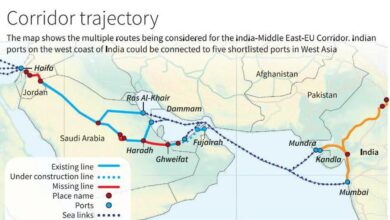India’s Q-Commerce market to hit $23.5 billion by FY28, says CareEdge
. . . powers jobs, innovation, and green practices in Indian urban retail; expands rapidly into Tier II & III cities

India’s quick commerce (Q-commerce) market is on the brink of a major transformation, with its value projected to surge to ₹2 lakh crore ($23.53 billion) by FY28, according to a recent report by CareEdge Ratings.
This marks a near threefold increase from the estimated ₹64,000 crore ($7.5 billion) expected by FY25, solidifying India’s position as one of the world’s most dynamic and rapidly evolving digital consumer markets.
Originally considered a novelty for urban convenience, Q-commerce — where essentials are delivered in under 30 minutes—has swiftly become a vital part of India’s retail ecosystem. The combination of rising consumer demand, robust digital infrastructure, and strong venture capital backing has set the stage for Q-commerce to become a key pillar in India’s retail future, particularly in densely populated urban centers.
Q-commerce is reshaping the way consumers interact with retail by offering ultra-fast delivery and hyper-local fulfillment. Unlike traditional e-commerce platforms that rely on centralized warehouses and longer delivery timelines, Q-commerce players use dark stores, micro-warehouses, and advanced logistics networks to deliver within minutes. Platforms like Blinkit, Zepto, Swiggy Instamart, and BigBasket Now have captured a significant share of this fast-growing demand, particularly among Tier I and Tier II city consumers.
The next wave of Q-commerce growth is increasingly coming from Tier II and Tier III cities, which were previously underserved by modern retail infrastructure. As smartphone penetration, internet connectivity, and UPI-based digital payments continue to expand in these regions, so too does the appetite for fast, convenient, and reliable delivery services. Localized assortments tailored to regional needs are also helping platforms foster deeper customer engagement outside of metro areas.
In these smaller towns and cities, Q-commerce is not replacing traditional kirana stores but complementing them. By enabling real-time inventory visibility, offering seamless digital payment options, and expanding product availability, quick commerce is modernizing traditional supply chains while empowering local retailers. It’s creating a hybrid model where the benefits of both digital and physical retail coexist.
Innovation remains at the core of Q-commerce growth. From AI-driven inventory forecasting to route optimization algorithms and electric delivery fleets, technology is fueling every aspect of the industry. Companies are also experimenting with new business models such as subscriptions for daily needs, home-cooked meal delivery, and integration with financial services like Buy Now Pay Later (BNPL). These features enhance user experience and drive customer retention.
Strong investor confidence is reinforcing this momentum. Platforms like Zepto and Blinkit have raised hundreds of millions of dollars in recent funding rounds from top-tier venture capital firms. This inflow of capital is being channeled into expanding operations, strengthening supply chains, enhancing technological capabilities, and entering new markets—fueling a competitive ecosystem driven by innovation and scale.
The Q-commerce sector is also delivering significant employment and economic benefits. It is generating thousands of jobs in delivery, warehousing, technology, and customer service roles. For gig workers, the sector offers flexible working hours, improved wages, and insurance benefits—key drivers of inclusive growth in the digital economy. Additionally, allied industries like logistics, packaging, and cold chain solutions are seeing growth spurred by this retail revolution.
On the sustainability front, many Q-commerce platforms in India are adopting green practices. The use of electric vehicles, biodegradable packaging, and clustered delivery routes is helping reduce the sector’s environmental impact. Several firms have pledged to become carbon-neutral in the near future. Others are working directly with local farmers and FPOs (Farmer Producer Organizations) to source fresh produce, reducing waste and supporting regional agriculture.
Ultimately, India’s Q-commerce sector is not just a commercial trend—it’s a paradigm shift in how modern consumers engage with retail. The blend of speed, personalization, convenience, and affordability has redefined expectations. If current trends continue, the $23.53 billion FY28 forecast may even be conservative. As the country embraces its digital decade, Q-commerce is poised to remain a defining force in the retail landscape—empowering consumers, creating jobs, and driving innovation across the economy.













